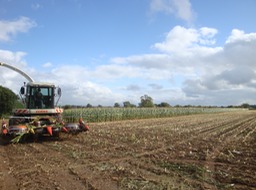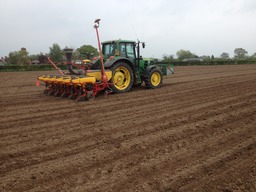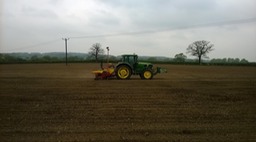The biggest advantage in growing maize is that it can be done using manures as fertliser. There is always lots of manures around most stock farms in the spring so maize offers a great opportunity to dispose of the winter waste. By using manures in this way the nutrients are utilised by a crop that thrives off organic materials. However if farming land at distance and manures are unavailable or the transport cost is too high to the site, fertiliser is the only way to go. Have soils tested to ensure a soil index of at least P2 and K2- . If the index is below this then rates will have to be adjusted accordingly. Soil sampling is the cheapest insurance against a disappointing crop.
See below how much nutrient is required and the quantity of inorganic fertiliser needed to reach the required target.
With forage maize weather used for food or fuel there is always waste created. If it is feeding cows on a slurry based system, or using maize to feed an anerobic digester, there will be lots of slurry or digestate to spread on the ground before the crop is planted. If feeding cattle on loose housed straw based system this can be even better. The potash content in farm yard manure (FYM) is a great deal higher than slurry. The typical values of the manures are as follows.
At these spread rates it almost brings us within distance of the required quantity needed to grow the crop. If using a starter fertiliser when drilling the seed, which has become standard practice now on most farms,
Diammonium phosphate (DAP) is
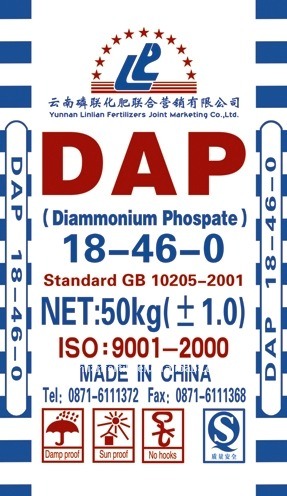
N 18 - P 46 - K 0
There are other blends such as mono-ammonium phosphate (MAP) which is usually
N 11 - P 52 - K 0
These products are to be drilled beneath the soil at least 5 cm away from the seed. It is to be placed in rows, becoming available to the plants as their roots develop. The products are usually applied at 125kg/Ha. Giving the crop sufficient phosphate and nearly enough nitrogen and potash to grow the crop sufficiently if manures have been applied. The remainder of the nitrogen can be applied in 3 different ways.
- Broadcasting onto the seedbed with prilled ammonium nitrate or urea.
- Top dressing at the 4-6 leaf stage in June when the crop needs feeding.
- Apply foliar urea to the growing crop at the 8-10 leaf stage.
All of these options work very effectively, broadcasting nitrogen on the seedbed will not give the most efficient use of the nitrogen as the product will be loosing ammonia for 6 weeks before the crop can use it.
Broadcasting nitrogen onto the growing crop can cause scorch if the prills get into the growing plants. The nitrogen uptake of the crop will be greater at the 4-6 leaf stage and the ammonia loss will be reduced.
Applying foliar urea late onto the growing crop is an excellent way of utilising the nitrogen, the plants are receiving the nitrogen exactly when they need it, keeping the plants greener through the maturing months. There is approximately 0.2kgs of Nitrogen in a litre of foliar urea so 250 litre = 50kgN.
Kay Nitro (KN) is a good product to do both the potash and Nitrogen pre or post drilling but if applying post drilling use a tractor with the wheels set to straddle the rows. The analysis of KN fertiliser is 25-0-13.
See below the quantity of nitrogen needed and the options of fertiliser that can be used.
There are other forms of starter fertilisers including micro-band or micro granular fertiliser applications and other different products that can be placed in the row. Micro granular can work out expensive. The fertiliser is placed into the seedbed around the seed to enable the plants to have immediate access to the nutrients immediately after germination. Rates of some of these fertilisers can be as low as 20kg/Ha. This enables the drill to carry a good quantity of product to the field and there is no need for a machine to load large bags of fertiliser. Quick and easy fill ups mean less down time for the drill and less stress for the drill man. The analysis of the micro-granular fertiliser is around the same as the DAP but some products have other trace elements like zinc and sulphur which can be useful if there are any known deficiencies on the land.
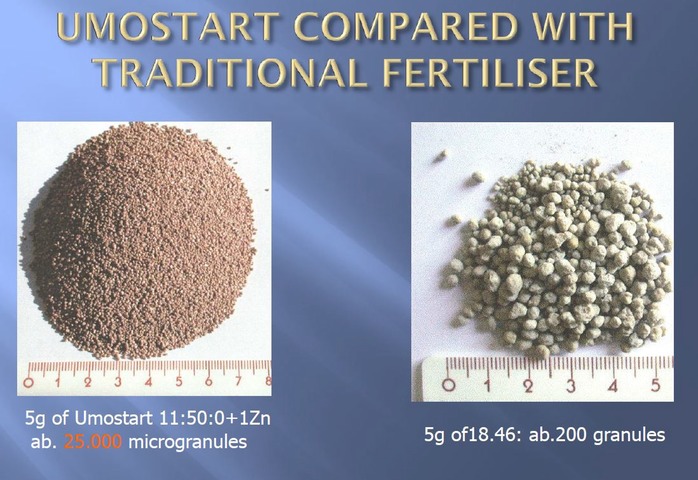
There are lots of starter fertilisers on the market, try a few and discover what works the best on your land. Some farms just use manures and nitrogen fertiliser alone and grow outstanding crops and some just use manure with starter fertiliser to achieve the same result. Some farms just use manures alone and grow outstanding crops of maize.
As long as the manures do not exceed the limit on the land, be especially careful if in a NVZ (nitrogen vulnerable zone). The more manure the better, but unfortunately with manures comes weeds.
